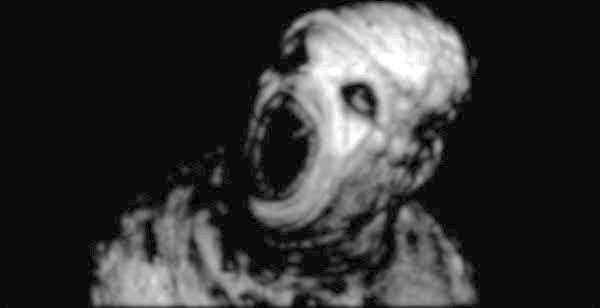What's the Difference Between Lucifer and Satan?

Despite all the confusion, Lucifer and Satan are separate demons with separate histories. Discover how they differ.
In this day and age, it has become standard practice to use the terms Lucifer and Satan interchangeably. It’s nearly always the case that, out of a lack of awareness, people use the name Lucifer as a synonym for Satan, and not the other way around.
This article therefore attempts to explain the backgrounds and roles of these two distinct individuals, starting with their appearances in the Hebrew Bible, also known as the Tanakh.
Lucifer
The Book of Isaiah mentions Lucifer explicitly by name, claiming his fall is the result of his pride and unwillingness to submit to God:
How you have fallen from heaven, [Lucifer / morning star], son of the dawn! You have been cast down to the earth, you who once laid low the nations! You said in your heart, ‘I will ascend to the heavens; I will raise my throne above the stars of God; I will sit enthroned on the mount of assembly, on the utmost heights of Mount Zaphon. I will ascend above the tops of the clouds; I will make myself like the Most High…‘
— Isaiah 14:12-14
Lucifer has thus become the archetypal figure of excessive pride.
Satan
The Book of Ezekiel, in quoting God, references Satan more subtly:
Morever, the word of the Lord came to me:
‘Son of man, raise a lamentation over the king of Tyre, and say to him, Thus says the Lord God:
‘You were the signet of perfection, full of wisdom and perfect in beauty. You were in Eden, the garden of God; every precious stone was your covering, sardius, topaz and diamond, beryl, onyx and jasper, sapphire, emerald and carbuncle; and crafted in gold were your settings and your engravings. On the day that you were created they were prepared.
‘You were an anointed guardian cherub. I placed you; you were on the holy mountain of God; in the midst of the stones of fire you walked. You were blameless in your ways from the day you were created, till unrighteousness was found in you. In the abundance of your trade you were filled with violence in your midst, and you sinned; so I cast you as a profane thing from the mountain of God, and I destroyed you, O guardian cherub, from the midst of the stones of fire.
‘Your heart was proud because of your beauty; you corrupted your wisdom for the sake of your splendor. I cast you to the ground; I exposed you before kings, to feast their eyes on you. By the multitude of your iniquities, in the unrighteousness of your trade you profaned your sanctuaries; so I brought fire out from your midst; it consumed you, and I turned you to ashes on the earth in the sight of all who saw you. All who know you among the peoples are appalled at you; you have come to a dreadful end and shall be no more forever.’
— Ezekiel 28:11-19
On the surface, the prophecy seems to refer to the king of Tyre. But it is clear, as today most biblical interpreters agree, that the passage uses the human king as a conduit for rebuking the pride of Satan, ultimately lamenting his “dreadful end.”
The Confusion
There are two major overlaps in Lucifer’s and Satan’s experiences that are responsible for their conflation.
i) Rebellion
The first is the development of conceit and their subsequent departure from the kingdom of heaven, referred to pejoratively as a “fall from heaven” and commendably as a “renunciation of subservience.” The decision to abandon God reveals both an independence of character and an aversion to blind servitude—precisely the type of aversion displayed by the controversial free thinkers of centuries past.
ii) Self-Actualization
The second overlap lies in their desire to promulgate the knowledge they have gained—especially the knowledge that subverts God’s control. Figuratively, as the Morning Star and Light-Bringer, Lucifer distributes light in the form of truth. Compare these epithets to the Father of Lies, a label the Church has assigned to Satan in an attempt to invalidate his wisdom. Depending on the source, both Lucifer and Satan have been named as the serpent who tempts Eve to eat the fruit of the tree of the knowledge of good and evil in the Garden of Eden.
The Takeaway Message
Because the histories of Lucifer and Satan share so many similarities, it is understandable as to why their names should come up during the same discussions.
Repeated discussions of this type, however, have caused their differences to become obscured. What seems to be the case today is that Lucifer has effectively been subsumed by Satan, as far as names concern us. Nevertheless, each name represents an independent demon with a background and calling of his own:
- Whereas Lucifer was born of Aurora and Cephalus, Satan was created by God.
- Whereas Lucifer commands the deadly sin of Pride, Satan commands Wrath.
- Whereas Lucifer, together with Astaroth and Beelzebub, is part of the Unholy Trinity, Satan, by sheer virtue of supremacy, oversees its existence.
For Lucifer is a Prince of Hell, and Satan its Emperor.

By Marco Passaretti
Marco obtained his Master's degree in philology from the University of Cagliari. He has always been fascinated by the supernatural and maintains a strong appreciation for historically accurate occult fiction.





